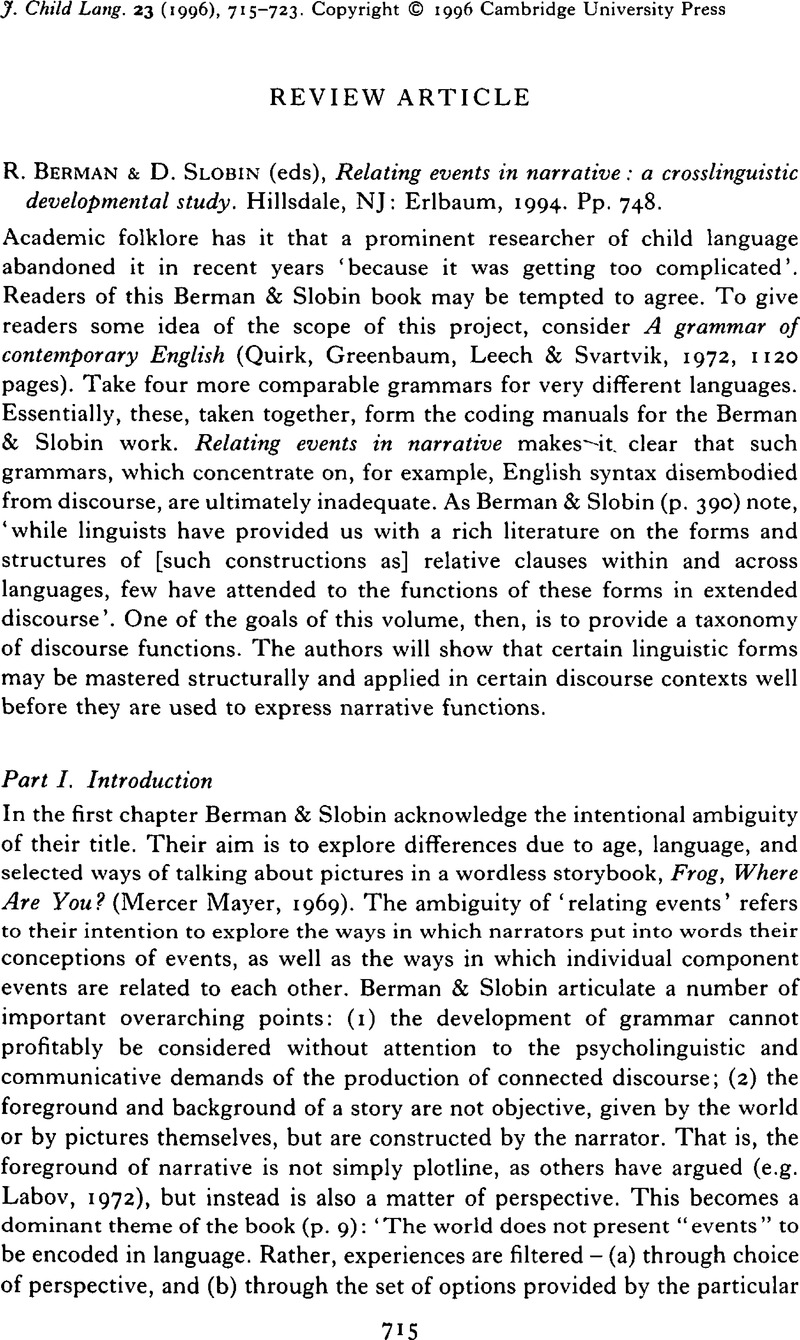Crossref Citations
This article has been cited by the following publications. This list is generated based on data provided by Crossref.
Coelho, Rafael
Mattos, Paulo
and
Tannock, Rosemary
2018.
Attention-Deficit Hyperactivity Disorder (ADHD) and narrative discourse in older adults.
Dementia & Neuropsychologia,
Vol. 12,
Issue. 4,
p.
374.
Savaş, Merve
Tunçer, Aylin Müge
Çokar, Ayşe Özlem
Demirbilek, Ahmet Veysi
and
Tüzün, Erdem
2020.
Impact of epilepsy on language and discourse: Two self-limited focal epileptic syndromes of childhood.
Epilepsy & Behavior,
Vol. 102,
Issue. ,
p.
106671.
Pascual, Mariona
and
Salas, Naymé
2021.
The cognitive profile and text-based traits of struggling writers (El perfil cognitivo y los rasgos textuales de los escritores con dificultades).
Journal for the Study of Education and Development: Infancia y Aprendizaje,
Vol. 44,
Issue. 1,
p.
219.
Salas, Naymé
Pascual, Mariona
Birello, Marilisa
and
Cross, Anna
2023.
Embedding Explicit Linguistic Instruction in an SRSD Writing Intervention.
Written Communication,
Vol. 40,
Issue. 3,
p.
857.
Winter, Rebecca E.
Stoeger, Heidrun
and
Suggate, Sebastian P.
2024.
Fine motor skills and their link to receptive vocabulary, expressive vocabulary, and narrative language skills.
First Language,
Vol. 44,
Issue. 3,
p.
244.
Mayo, Lynn Hansberry
2025.
Narrative Identity Formation: Rethinking Speech-Language Pathologists' Impact Through a Critical Lens.
American Journal of Speech-Language Pathology,
Vol. 34,
Issue. 5,
p.
3025.


